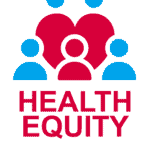Italy was the first European country to be hit by the COVID-19 pandemic. While the rest of the world watched, staff at the Italian National Institute of Health were under pressure to understand the spread of the disease, the impacts on health and inequalities, and the connections to social and economic factors. Here they share some of their experiences and actions.

The SARS-CoV-2 outbreak did not affect everyone equally. Currently, epidemiological data on the relationship between the number of SARS-CoV-2 infected Italian people and their socio-economic position are not yet available. However, it is possible to speculate on two main aspects: 1) the most socially and economically disadvantaged people might have been more exposed to infection and 2) they will suffer greater socio-economic repercussions at the end of outbreak.
The spread of the outbreak
Italy was the first country in Europe to be hit by the COVID-19 outbreak and it was caught off guard. At start of coronavirus outbreak, no European Union (EU) country responded to Italy’s call for aid and in addition, both France and Germany imposed export bans on vital medical equipment. Only in recent times the EU has offered “a heartfelt apology” to Italy and has tried to give a unified and coordinated response to the pandemic. Meanwhile our Northern regions, where most economic activities are located, were the worst affected. The Italian government made significant efforts to contain virus spread by means of first local and then countrywide restrictions; social distancing and lockdown measures were introduced, while resources and attention were focused on services and public health needs. However, remote work was not applicable for those working in essential services (healthcare, food sales), further exposing themselves to the infection. Although in Italy the health care system provides free of charge universal coverage, there was still speculation that the most socially and economically disadvantaged people might have been more exposed or more susceptible to the coronavirus.
Unequal exposure to the virus
We identified four factors which may contribute to increase exposure and heavier impacts of the virus.
Firstly, the ability to understand how to take precautionary measures. Lower health literacy may produce limited awareness of information on precautionary measures. We were also concerned about the impact on migrants living in Italy who do not speak Italian well, and might lack information in their language on how to defend themselves against the transmission of the virus.

Next, pre-existing conditions. Clinical evidence suggests that most fatalities induced by COVID-19 will be among those with previous chronic illness such as high blood pressure, diabetes and heart or respiratory disease especially among the elderly population. In 2019, approximately 23% of the Italian population was aged 65 years or older. This may partially explain why the impact of COVID-19 has been substantially more severe in Italy than other European countries 3 . Cultural factors may also have played a role, as in Italy different generations tend to spend more time together, often under the same roof. These habits may have facilitated contagion in the elderly.
Over the last decades, epidemiological studies have shown that in Italy as well as in other countries the most socially and economically disadvantaged are more likely to suffer from chronic diseases 4,5,6 .
Last but not least, socially excluded groups, including prisoners, the homeless, and migrants, might require tailored responses. In Italy, due to overcrowded jails, prisoners and prison guards might find difficulties to be adequately isolated from the other members of the community.
Unequal socio-economic repercussions
Currently, epidemiological data on the relationship between SARS-CoV-2 infected people and their socio-economic position is not yet available. It will be necessary to wait for the end of the acute phase of the pandemic to assess the distribution of the infection with respect to the socio-economic gradient existing in Italy before the pandemic.
The old and the young, and the effects on mental health.

Elderly people, already heavily affected by COVID-19, have seen their family support and networks interrupted by social distancing measures. Particularly those with multi-morbidities might be more affected by isolation, loneliness, and sadness, which can be exacerbated by the digital divide.
Similarly, people with existing disability and mental health issues, including those with severe mental illnesses, might be affected by a possible exacerbation of symptoms in response to pandemic-related information and behaviors, and suffer from the interruption of community interventions 9 .
Finally, it is predictable that the most affected will be the most economically fragile people: caregivers, housekeepers, precarious workers and all those who do not have adequate socio-economic protection and who are not working because of the restriction policies for containment of the pandemic 10:11. Next to these, small business owners, who have closed their businesses since the outbreak of COVID-19, are at risk of reduced income or poverty. In the agricultural sector, many of seasonal workers are migrants who work illegally for long hours and are underpaid by criminal organizations. Under the COVID-19 crisis, authorities are concerned that these criminal organizations may exploit the situation more than ever. People unable to bear the basic needs of their families could follow a greater use of legal and illegal forms of indebtedness and underworld organizations could gain economic and social power.
To cope with the consequences of the lockdown, the Italian Government has come up with a comprehensive recovery plan and unprecedented investment. The Law Decree No. 18/2020 (also named the “Cura Italia” Decree) established the first and most relevant provisions taken to strengthen the National Health Service, facilitated economic support for families, enacted new rules and protections for seasonal workers, and planned immediate aid for workers and Small and Medium-sized Enterprises (SMEs) through extension and deployment of existing instruments and complementing measures. Further actions have been approved in Law Decree 34/2020, informally named “Relaunch Decree”, because it provides for further measures focused to promote a re-launch of the Italian economy 1,2 ).
The role of Italian National Institute of Health
Since the start of the coronavirus pandemic, the Italian National Institute of Health (ISS) has cooperated with the Government as a member of the National Scientific and Technical Committee. In particular, ISS has coordinated the surveillance system integrating the epidemiological data provided by all Regions and Autonomous Provinces and the containment measures were developed on these data.

ISS has also created a web space dedicated to the new coronavirus, in which the main topics on COVID-19 have been translated into easy and accessible language for citizens. The site has also managed fake news, FAQs, brochures, videos and some infographics easy to be understood. Some documents are also translated into English and other languages, such as “Coronavirus: A practical guide for caregivers of elderly people” which was translated into 8 languages 14 .
ISS has also developed research reference documents in different fields of study to facilitate: i) the collection and analysis of data disaggregated by sex in COVID-19 patients, ii) the analysis of groups of pathologies with specific needs, iii) risk analysis and guidelines for the interrelationships between SARS-COV-2 and the environment for the safety of air, water and soil, iv) analysis of the implications of the COVID-19 epidemic in veterinary public health and food safety and hygiene v) indications for the correct use of telemedicine and digital health systems. A selection of some publications produced by our researchers in the scientific literature are also reported 3,15,16,17,18 .
Now in Italy, the spread of the outbreak is significantly decreasing but it is evident that societies will have to live with the virus until a vaccine or treatment is found. Thus, this will require constant and detailed monitoring to reintroduce new measures if needed. The ISS will be called upon to strengthen the health surveillance systems, which are already in place. In addition, new epidemiological studies should be planned to monitor how the secondary effects of COVID-19 have affected human and social systems and their environments and how government interventions can impact these.
Looking to the future
The COVID-19 pandemic has highlighted some mechanisms that could underpin health disparities. A comprehensive recovery plan and unprecedented investment have been initiated by the Italian Government to counterbalance the socio-economic impact. But in ways we have never seen before, the pandemic has called into question the principles of globalisation on which the global economy and relations between states are based on. ISS and other national and international multidimensional institutions should be in charge of providing accurate and evidence-based scientific information that could make it easier for economists and politicians to rethink the economic model with an eye on equity.
References
- Law Decree No. 18/2020. Available here .
- Law Decree 34/2020. Available here .
- Onder G, Rezza G, S Brusaferro . Case-fatality rate and characteristics of patients dying in relation to COVID-19 in Italy. JAMA
- Global Report for Research on Infectious Diseases of Poverty. WHO; 2012. Available here .
- Quinn SC, Kumar S. Health inequalities and infectious disease epidemics: a challenge for global health security. Biosecur Bioterror. 2014 Sep-Oct; 12 (5): 263-73. doi: 10.1089 / bsp.2014.0032 . PubMed PMID: 25254915; PubMed Central PMCID: PMC4170985.
- Blumenshine P, Reingold A, Egerter S, Mockenhaupt R, Braveman P, Marks J Pandemic influenza planning in the United States from a health disparities perspective. Emerg Infect Dis. 2008 May; 14 (5): 709-15.)
- Key Messages and Actions for COVID-19 Prevention and Control in School. 2020. Available here .
- Holmes EA et al. Multidisciplinary research priorities for the COVID-19 pandemic: a call for action for mental health science. 2020 Lancet S2215-0366 (20) 30168-1
- Lee J Mental health effects of school closures during COVID-19. thelancet.com/child-adolescent Published online April 14, 2020 https://doi.org/10.1016/S2352-4642(20)30109-7
- COVID-19 – A social emergency for millions of precarious workers in Europe by: European Federation of Food Agriculture and Tourism Trade Unions. March 19, 2020 Available here .
- Adams-Prassl, T. Boneva, M. Golin, C. Rauh The large and unequal impact of COVID-19 on workers. April 8, 2020. Available here .
- ISS COVID-19 reports. Available here .
- https://www.iss.it/rapporti-iss-covid-19-in-english
- https://www.iss.it/covid-19-opuscoli
- Riccardo F, Ajelli M, Andrianou X, Bella A, Del Manso M, Fabiani M, Bellino S, Boros S, Urdiales AM, Marziano V, Rota MC, Filia A, D’Ancona FP, Siddu A, Punzo O, Trentini F, Guzzetta G, Poletti P, Stefanelli P, Castrucci, MR, Ciervo A, Di Benedetto C, Tallon M, Piccioli A, Brusaferro S, Rezza G, Merler S, Pezzotti P. COVID-19 working group. Epidemiological characteristics of COVID-19 cases in Italy and estimates of the reproductive numbers one month into the epidemic. medRxiv 2020.04.08.20056861; https://doi.org/10.1101/2020.04.08.20056861.
- Matricardi PM, Dal Negro RW, Nisini R. The first, holistic immunological model of COVID-19: implications for prevention, diagnosis, and public health measures. Pediatr Allergy Immunol 2020; Epub 2020 May 2; https://doi.org/10.1111/pai.13271.
- Gagliardi MC, Ortona E, Ruggieri A. ACE2 expression and sex disparity in COVID19. Cell Death Discov. 2020; (in press).
- Giorgi Rossi P, Ferroni E, Spila Alegiani S, Leoni O, Pitter G, Cereda D, Marino M, Pellizzari M, Sultana J, Trifirò G, Massari M, ITACOVID19 working group. Survival of hospitalized COVID-19 patientis in Northern Italy: a population-based cohort study by the ITA-COVID19 Network. medRxiv 2020; https://medrxiv.org/cgi/content/short/2020.05.15.20103119v1.









